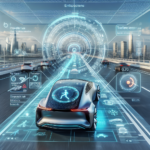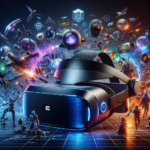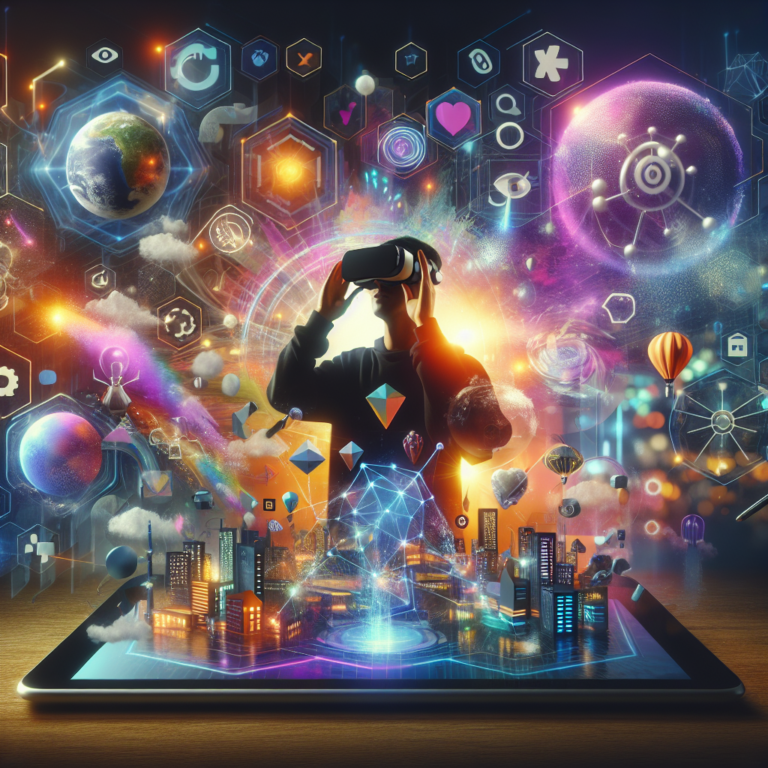Unlocking Engagement: The Future of Marketing Through Immersive Technologies 🚀
The New Era of Consumer Engagement
Consumers today are more informed and sophisticated than ever. Traditional marketing strategies often fall short in gaining their attention and retaining their interest. With the advent of immersive technologies—such as virtual reality (VR), augmented reality (AR), and mixed reality (MR)—brands are discovering new ways to captivate their audience. These technologies create deeper connections and more memorable experiences, making them essential tools in the next-gen marketing toolkit.
What Are Immersive Technologies?
Immersive technologies encompass a range of advanced digital experiences that immerse users in a virtual or augmented environment. Here’s a brief overview:
- Virtual Reality (VR): A fully immersive environment where users interact with a computer-generated 3D world.
- Augmented Reality (AR): Superimposing digital elements onto the real world, enhancing the user’s perception and interaction with their environment.
- Mixed Reality (MR): A hybrid of VR and AR, where physical and digital worlds collide, allowing real-time interaction between them.
As technology continues to evolve, the integration of these immersive experiences into marketing strategies is becoming increasingly essential for brands looking to engage consumers on a deeper level.
Transforming Consumer Experiences
Immersive technologies offer brands unique opportunities to transform mundane transactions into engaging experiences. Here’s how companies are using these technologies to drive consumer engagement:
1. Creating Virtual Showrooms
Imagine shopping for furniture without leaving your home! With VR, brands can create interactive virtual showrooms that allow consumers to visualize how products would fit into their spaces. Brands like IKEA have already begun incorporating VR applications for customers to design their dream room, providing a seamless and engaging shopping experience.
2. Interactive Product Demos
AR enables customers to try products before they buy. This technology can be particularly impactful in industries like fashion and cosmetics. For example, makeup brands can deploy AR apps that allow users to “try on” lipstick or eyeshadows virtually, creating a fun, personalized shopping experience.
3. Gamifying Marketing Campaigns
Marketing doesn’t have to be serious! Brands are increasingly using gamification strategies combined with immersive technologies to engage their audience. Starbucks successfully implemented this concept with its “Starbucks for Life” campaign, blending AR elements with gameplay to boost customer interactions and reward engagement.
The Power of Personalization
Personalization in marketing is crucial for capturing consumer attention, and immersive technologies elevate this to a new level. By leveraging data analytics and AI, brands can create customized experiences based on each consumer’s preferences and behaviors. Here’s how:
1. Tailored Recommendations
With AR and VR, brands can guide consumers through interactive experiences that present tailored product recommendations. For instance, personalized quizzes can analyze consumers’ tastes and suggest products, enhancing their shopping journey and driving conversions.
2. Emotional Connections Through Storytelling
Immersive technologies allow brands to tell compelling stories like never before. By transporting consumers into a narrative through VR, brands can foster emotional connections. For example, automobile companies can create immersive test drives that narrate the story of the brand’s history, values, or sustainability efforts, allowing consumers to feel connected on a personal level.
Emerging Trends in Immersive Marketing
As we move further into the digital age, several exciting trends are set to shape the future of marketing:
1. Virtual Influencers
The rise of virtual influencers—digital characters created through computer graphics—has taken social media by storm. Brands are now partnering with these digital personas to reach tech-savvy consumers who are drawn to futuristic elements. These influencers exist in both VR and AR spaces, blurring the lines between reality and digital marketing.
2. Enhanced User Interactivity
Immersive technologies are shifting towards more user-centered experiences, where consumers will have a voice in shaping the content they consume. This trend towards increased interactivity promises to foster a loyal community around brands.
3. The Metaverse Revolution
The metaverse—the collective virtual shared space—is poised to change how marketing interactions occur. With brands already purchasing virtual land and hosting events in the metaverse, it is becoming clear that immersive marketing strategies will be key for engagement and growth in the future.
Strategies for Implementing Immersive Technologies
For brands eager to jump on the immersive technology bandwagon, here are some strategies to consider:
1. Invest in R&D
Brands should allocate resources to research and develop innovative AR and VR solutions. This investment can pay off significantly by enhancing customer experiences and driving engagement.
2. Collaborate with Tech Partners
Partnering with tech companies specializing in immersive technologies can revolutionize your marketing approach. These collaborations can bring fresh ideas and expertise to create compelling campaigns.
3. Create Multi-Channel Experiences
Integrating immersive technologies with other channels—like social media, email marketing, and websites—creates a cohesive and enhanced consumer journey. This multi-channel approach allows brands to reach consumers wherever they are.
The Bottom Line
Immersive technologies are not just a passing trend; they are fundamentally changing the way brands interact with consumers. By leveraging these innovative tools, companies can create engaging, personalized experiences that drive genuine emotional connections and foster loyalty. As the boundaries between digital and physical worlds continue to blur, the future of marketing is undoubtedly bright, paving the way for brands that are ready to embrace the next-gen immersive experience. 🌟




0 Comments